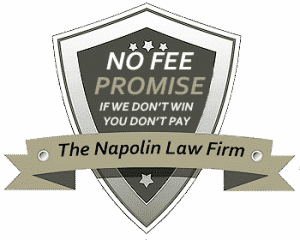Emotional Distress Under Personal Injury Law
Learn the Basics of Personal Injury Emotional Distress
Defining Emotional Distress Under Personal Injury Law

Emotional Distress Under Personal Injury Law
When an individual suffers from mental or emotional stress, California recognizes that he/she has a right to recover for the damages that resulted in that. For damages to be recovered by a person suffering emotional distress, the distress has to be a result of a physical injury or the witnessing of a physical injury. There are a number of different situations discussed below where Liability for Distress is Valid. These include: 1) Physical impact; 2) Shock producing physical disorder such as fear for own safety; 3) Perception of injury to close relative; 4) Negligent infliction of emotional distress; and 5) Intentional infliction of emotional distress.
In any event, seeking advice from a professional like a personal injury attorney in Southern California is of importance to deciding how to establish this cause of action. Therefore, calling The Napolin Law Firm to speak with an attorney for free about a personal injury law case is very important.
Need to Establish Genuineness of Claim
If no harmful physical contact was present to the body, courts will usually not permit injured parties with the right to recover for their damages. The reasons for that are:
- Emotional distress damages are extremely difficult to measure and then prove
- If courts permit recovery for such damages, an unethical strain of fictitious claims may be encouraged
- Wrongful persons will become liable for the consequences of their conduct
Although these are a number of reasons courts are reluctant to permit recovery, the biggest obstacle in establishing a claim for emotional distress is proof. In addition, the defense council will almost always have arguments that prevent the permission of recovery.
Necessary Things to Support Liability
Impact: if you experienced an unwanted and/or distressing contact to your body by someone else, object or substance that resulted in emotional distress, you are entitled to recover for these damages. However, for recovery to be permitted, it must be shown that the defendant should have anticipated the extent of distress his/her actions cause.
Physical Disorder and fear for own safety: if you experienced emotional distress as a consequence of a wrongful act that resulted in a physical disorder even if no bodily contact took place, you are entitled to recover for your emotional distress damages.
Bystander’s perception of another’s injury: because seeing or perceiving the tortiously caused injury or death of a loved one can be a traumatic experience, the California tort laws acknowledge and recognize the emotional distress that arise from that. Therefore, if you had a similar experience, you are entitled to recover for the damages. However, to permit recovery, a number of factors must be considered to determine whether the defendant have anticipated that the bystander would suffer from emotional distress. These factors include:
- Nearness to Scene: the location and distance of the plaintiff to the accident;
- Direct Emotional Impact From Sensory Contemporaneous perception: whether or not the plaintiff has experienced emotional distress as a result of the shock;
- Relationship: the proximity of relationship the plaintiff and the victim have;
- Other theories: when the plaintiff is unable to recover damages for his/her emotional distress because the criteria is not satisfied, he/she can; and
- Defenses: no liability to primary victim and immunity which must be established that he/she was liable for the injury or death of the victim, otherwise will not be liable for the damages experienced by the bystander.
Negligent Infliction of Emotional Distress Theory
Negligent Infliction and foreseeable harm theory follow the general criteria of anticipation and distress resulting from physical harm. However, there is an important inquiry that must be addressed which discusses the reasonableness of the defendant in anticipating the potential harm that can consequence in the emotional distress.
- Direct victim requirement: damage recovery for distress cannot be permitted if it was resulted from mere sympathy for the victim or for the sole observation of the injury.
- Special relationship: this relationship must exist between the wrongful person and the plaintiff in order for the tortfeasor to be liable for emotional distress damages.
- Negligent breach of contract: if a contract's terms or subject matter directly concerns the comfort or the personal welfare of a party, then the plaintiff is entitled to recover for these damages.
- Invasion of property interests: provide merits for a plaintiff to recover for emotional distress damages.
- Product defects: in the circumstance where a defective product caused an injury to occur, the witness of the act (who is not necessarily the victim) may recover for their emotional distress regardless of the relationship the witness has with the victim.
Intentional Infliction of Emotional Distress Theory
Damages can be recovered unde the thoery of intentional infliction where the following elements are established:
- The defendant caused an outrageous conduct;
- There was evidence of intent to cause harm or negligently disregarded the probability of causing emotional distress;
- Evidence of severe emotional suffering;
- There is an actual and proximate causation of distress by defendant; and
- Absence of privilege authorizing the defendant’s conduct.

